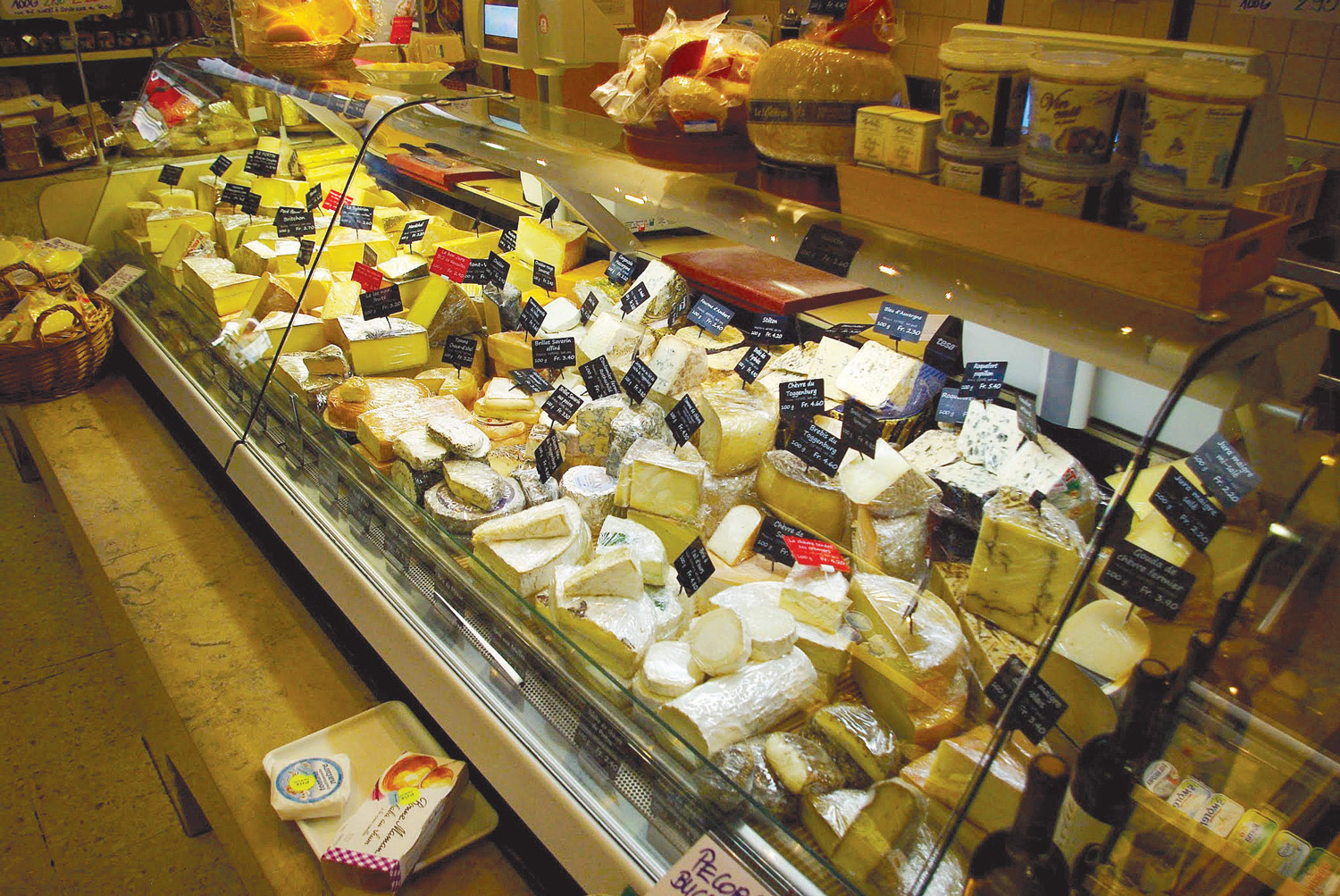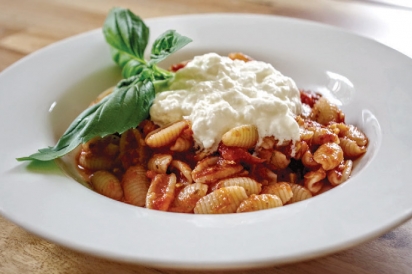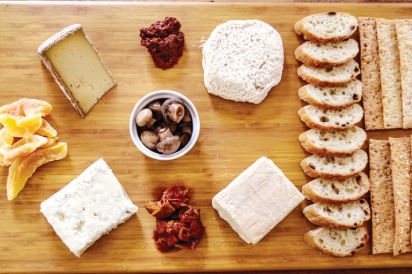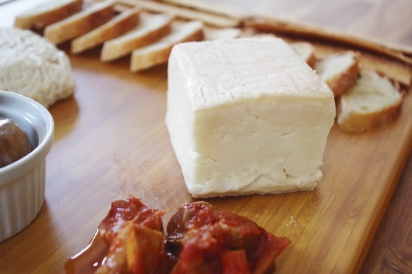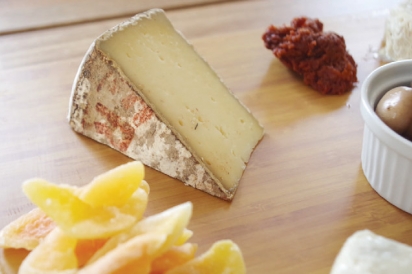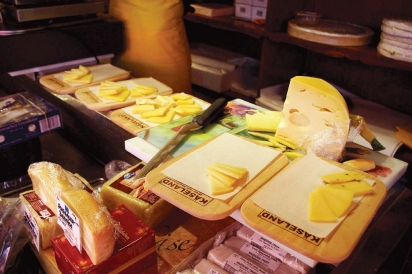The Whey of the World
In my life as a chef, I have encountered other food professionals from many different cultures and ethnicities. Most I greeted warmly with much discussion of their home countries, climate, and, especially, food. I was always keen to learn more from my Japanese-Brazilian compatriot with regards to sushi or grilled meats. My Filipino coworkers have taught me proper pork adobo and halo halo. My friends from Spain helped me understand real paella and the best damn octopus carpaccio you’ve ever encountered. My French sous chef taught me the patience required to make a proper consomme.
It is here, now, that I must apologize to the English, Irish and Scottish cooks I’ve worked with. I belittled your food. The haggis, boiled beef and corned beef dinner just were not the foods that scaled culinary heights. And I, in my smugness, took those foods as the benchmark of those cuisines because that was what America had been taught that you cook. I am sorry I ever thought that. I now know that there is exciting food in those countries and a wonderful tradition of amazing culinary prowess. The idea that an entire country’s cuisine can be summed up in one dish is ridiculous. In my travels around the world this has been driven home to me in embarrassing and humbling ways.
In the foreign food aisle in a grocery store in Gibraltar, I was faced with an American section that consisted of tubs of Duncan Hines frosting, Kraft Macaroni and Cheese and Campbell’s Chicken Noodle Soup. In France I asked about an American product and the manager took me to a single shelf at the back of the store which housed Heinz ketchup and mustard. I was quietly informed that those products were carried against his wishes. Most ignominious of all was the cheese from our country nestled amongst the sheep, cow, and goat cheeses that make one want to walk down the aisle just to savor the smells. Our contribution, the one other countries judge us by: American cheese.
It is awful stuff American cheese. Bland, homogenous, in my opinion barely edible. When I realized that this was the cheese we were judged by, I was hurt. I was also embarrassed that I ever made fun of English cooking because the worst English Cheddar is leagues better than any slice of American cheese.
I love cheese. Let’s get that right out of the way. It’s one of the reasons I look like an Easter egg with eyes. I exercise, sure, but put me in front of a creamy Brie with some soft bread? Plunk! There’s another 1/8” on the waistline. I like all kinds of cheese. In my travels I’ve been able to try some that I am quite sure no other American ever sampled. I’ve had handcrafted goat cheese from a small farm in the hills of the Canary Islands. It was crumbly and creamy all at the same time. A little milder than the goat cheese we get here. I was told the goats eat a steady supply of fresh figs that fall to the ground and that adds to the lushness of the cheese. I bought a one-kilogram wheel, and I was told not to refrigerate it so I left it on the galley counter with a loaf of soft bread. In the morning, it was gone.
In Greece, I had a halloumi that was embedded with pistachios and dried oranges. It was lightly grilled and drizzled with local honey. It was the entirety of my meal that night. I sat at an outside terrace with a scientist friend, and we watched the sun set over the Mediterranean and enjoyed that cheese and bread.
In Switzerland, there is a small city called Baden about a half hour north of Zurich. I have relatives who live there and I am a frequent visitor. In that town, as in most Swiss towns, there is a cheese shop. The owner knows me now, and greets me warmly when I walk in and we discuss the type of cheese I’ll get that day. It’s always something fabulous. Brie so creamy that when you pierce the rind you have to scoop it with a spoon. Others that are nutty and crumbly, some tangy, some salty. Everyday something new and delicious that I share with my Aunt and Uncle on the back porch.
In Bellegarde-sur-Valserine, France I shared a chunk of bleu cheese created at a local farm with an older couple in the park. They spoke no English, I speak no French. It was one of the warmest, nicest interactions I’ve ever had. This bleu cheese was astounding; created a few kilometers away and only sold in this town, nowhere else. Simply amazing.
In my travels I try to make a point of sampling a locally-produced cheese. Something made in the region and unique to the area I am in. Sometimes it’s a fresh cheese, a farmer’s cheese just made that day. Other times it’s something that’s been aged for months in somebody’s cellar. Often something in between. By itself, as part of a salad, on a sandwich. I try it every way I can.
And then, back to America. Don’t get me wrong, Cabot is nice and all but it’s just not the same. Part of the problem with our cheese is that we’ve regulated so much of what makes the flavor unique. Local European cheeses are generally made at the source. The cow is milked, the milk turned into cheese, the cheese sold at a farmstand. It’s not homogenized, sometimes it’s not even pasteurized. In America, very little cheese is produced at the source. Our regulations require homogenized, pasteurized dairy, made in a stainless steel, sterilized environment. What terroir is imparted by stainless steel and food grade lubricant? Not much.
Are there fabulous cheese-producing regions in the U.S.? Absolutely. Vermont, Wisconsin, California and many other states with a strong agricultural background produce wonderful cheeses. I buy as many as possible. A homemade poutine is only as good as the cheese curds, and the cheddar curds from my friend Jonah in Wisconsin fit the bill. I love a slab of Cheddar from Sugarbush Farms in Quechee, VT on my medium rare burger.
So, I spend quite a bit of time looking for good cheeses. Since I want to buy locally I am always looking at small purveyors and if possible, locally produced cheese. I try not to give too much money to the big chain stores. I will definitely spend a little more money to support my local folks. That said, a disclaimer: none of the following stores have any idea I am talking about them now. I simply have spent some time in the last few weeks seeking out interesting cheese purveyors, buying at least two types of cheese and sharing it with friends. Nobody gave me free cheese or paid me or anything of the sort. Understand that I would have accepted any cheese as a gratuity but that never happened.
The first is close to home. The Brown Jug at the corner of Main and Jarves Streets in Sandwich has a wonderful selection of cheeses. I purchased a Gorgonzola that had a fabulous creaminess and excellent flavor. A chunk of nutty, crumbly Parmigiano- Reggiano was also a hit.
Worth the drive is The Chatham Cheese Company. They have a wonderful selection and were happy to help me make good choices. These ended up being the Wensleydale (Wallace and Gromit would approve) and Nancy’s Camembert with which I topped a shirred egg. Both fantastic.
Which brings us to Lo Adoro, the Italian specialty market on Route 6A in Sandwich. Another fabulous Gorgonzola and a Brie that was comparable to some of the Brie I got in the Swiss Alps. The real treat, however, was a locally-produced cheese made right here in Brewster. ACK Gioia is a revelation. I know Edible Cape Cod has already included a story on this wonderful product in the winter 2020 issue, and I assure you it is well worth seeking out. The Stracciatella is amazing. Few things are better than a bowl of al dente pasta with fresh tomato, basil and balsamic reduction topped with a scoop of this cheese.
In the end, this is a hard truth. Our cheese is different from what I get in Europe or South America. It’s still delicious and, shared with friends on a large cutting board with some bread, crackers and local honey, it’s as sublime an experience as any other, in any other place. That’s the main thing. The sharing.
The company. The conversation. The look on a face when they take a particularly good bite of a Gorgonzola. I will continue to seek out small-batch, locally-produced cheeses whenever possible. The hunt for good cheese is enjoyable. New shops, new people, new compatriots in my cheese journey. Perhaps you’ll join along?
ACK Gioia
302 Underpass Road, Brewster
774-323-0686
On Facebook
The Brown Jug
155 Main Street, Sandwich
508-888-4669
thebrownjug.com
The Chatham Cheese Company
902 Main Street, Chatham
508-945-1605
chathamcheese.com
Lo Adoro Italian Market
Route 6A, Sandwich
774-205-2281
loadoromarket.com
North Falmouth Cheese Shop
402 Route 28A, North Famouth
508-356-3666
northfalmouthcheese.com


